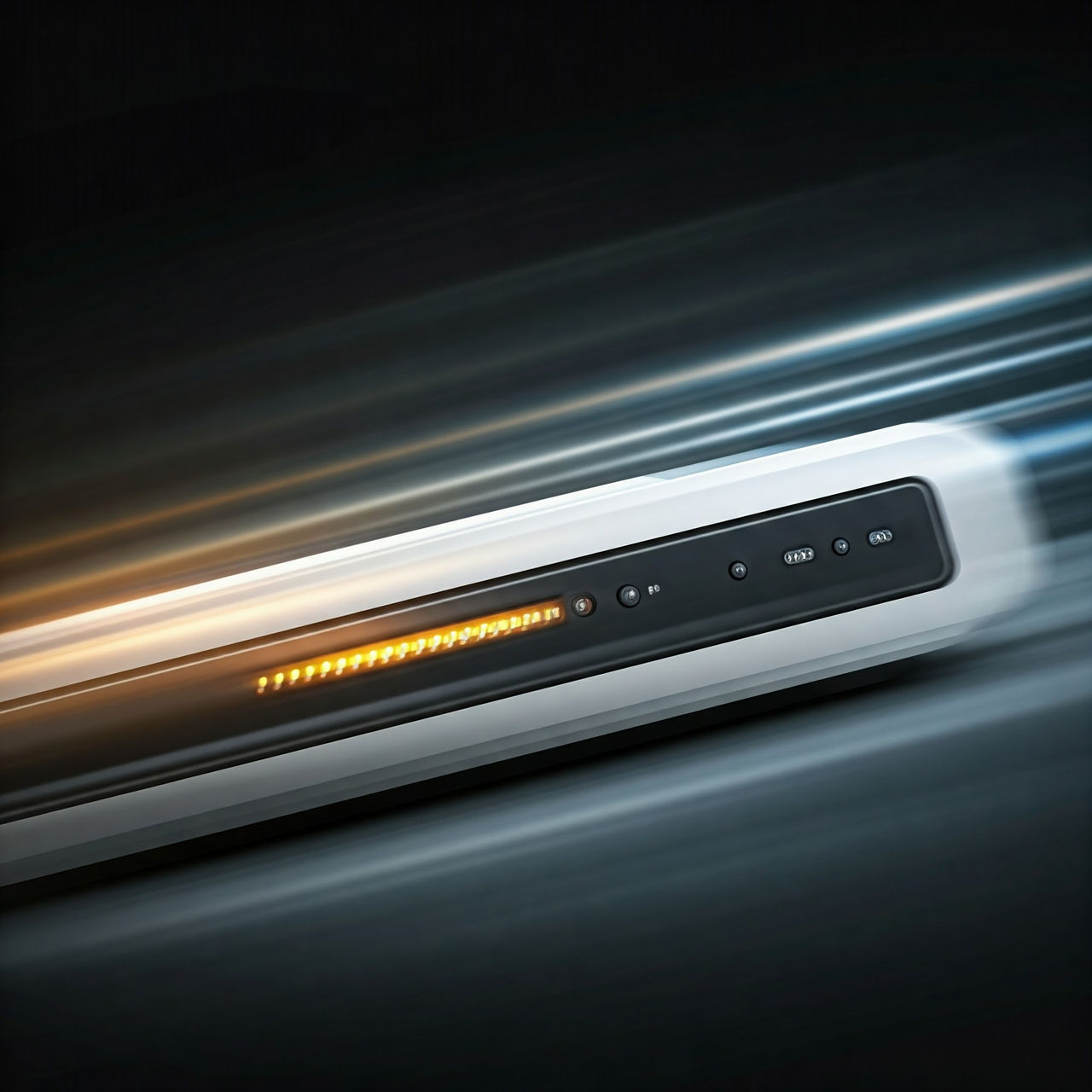
Pixel 7 vs Pixel 8: Is it worth the upgrade?
19 December 2024
Pixel 7 vs Pixel 8
Let’s get down to the nitty-gritty. Here’s a detailed comparison of the core specifications of the Pixel 7 and Pixel 8.
Pixel 7 vs Pixel 8 specifications1
Feature | Pixel 7 | Pixel 8 |
Display | 6.3-inch OLED, 90Hz | 6.2-inch OLED, 120Hz |
Processor | Google Tensor G2 | Google Tensor G3 |
RAM | 8GB | 8GB |
Storage | 128GB, 256GB | 128GB, 256GB |
Main Camera | 50MP wide, 12MP ultra-wide | 50MP wide, 12MP ultra-wide |
Front Camera | 10.8MP | 10.5MP |
Battery | 4,355mAh | 4,575mAh |
| OS Updates | 3 years | 7 years |
| Price (AU$) | Starting at $999 | Starting at $1,199 |
The Pixel 8 features Google's Tensor G3 chip, providing better AI capabilities and overall performance. It also includes a higher refresh rate display and longer software support.
These upgrades might seem minor on paper, but they can significantly impact daily use – especially if you rely heavily on your phone for photography, gaming, or productivity.
Price
Price is a significant consideration. Here’s a breakdown of what you’ll be spending.
Pixel 7 vs 8 pricing
Model | Pixel 7 Price (AU$) | Pixel 8 Price (AU$) |
128GB | $999 RRP | $1,199 RRP |
256GB | $1,129 RRP | $1,299 RRP |
The Pixel 8 is more expensive (starting at AU$1,199), however, it is the newer model. If budget is a primary concern, the Pixel 7 is an excellent phone and offers great value but most retailers either have limited stock or are selling them refurbished. But if your budget can stretch, the extra cost for the Pixel 8 is justified by its additional features, improved performance, and extended software support.
Design & display
The design of the Pixel 8 is more refined and feels more premium.
Pixel 7 vs Pixel 8 design and display
Feature | Pixel 7 | Pixel 8 |
Dimensions | 155.6 x 73.2 x 8.7 mm | 150.5 x 70.8 x 8.9 mm |
Weight | 197g | 187g |
| Display | 6.3-inch OLED, 90Hz | 6.2-inch OLED, 120Hz |
| Brightness | 1,400 nits | 2,000 nits |
The Pixel 8 is smaller and lighter, making it easier to handle. It also has a higher 120Hz refresh rate display compared to the Pixel 7's 90Hz, providing smoother scrolling and a more responsive touch experience.
And there's good news if you regularly use your phone outside – the Pixel 8's increased brightness of 2,000 nits makes it easier to use in bright sunlight, improving its outdoor visibility.
Google has also refined the design with rounded corners, making the Pixel 8 feel more comfortable in the hand.
The camera bar, a signature design element of the Pixel series, is more pronounced, giving the phone a sleek and modern look. This design looks good and adds durability with improved Gorilla Glass protection.
Cameras
Both phones have impressive cameras, but the Pixel 8 includes some important upgrades.
Pixel 7 vs Pixel 8 camera features
Feature | Pixel 7 | Pixel 8 |
Main Camera | 50MP wide, f/1.9 | 50MP wide, f/1.7 |
Ultra-Wide | 12MP | 12MP with autofocus |
Front Camera | 10.8MP | 10.5MP |
The Pixel 8's main camera has a wider f/1.7 aperture than the Pixel 7’s. This lets more light in for better low-light performance. The ultra-wide camera now includes autofocus, enabling macro photography – a big plus if you like taking close-up shots.
The Pixel 8’s enhanced image processing and AI capabilities also mean your photos will have better colour accuracy, dynamic range and detail. You’ll capture those memories in a vivid vision.
Google's software magic is also present in the Pixel 8. Software like Magic Eraser and Photo Unblur makes it easier to get the perfect shot every time. And while slightly reduced in megapixels, the front camera uses improved AI processing for clearer, more natural selfies.
Performance & battery
The Pixel 8 comes with the new Tensor G3 chip, offering better performance and AI capabilities.
Pixel 7 vs 8 performance and battery life
Feature | Pixel 7 | Pixel 8 |
Processor | Google Tensor G2 | Google Tensor G3 |
Battery | 4,355mAh | 4,575mAh |
Charging | 21W wired, 20W wireless | 27W wired, 18W wireless |
The Pixel 8's Tensor G3 chip is more powerful and efficient. This means better performance in apps and games and more advanced AI features. The Pixel 8 also has a slightly larger battery and faster charging, both wired and wireless. You can expect more consistent 24 hour+1 battery life with the Pixel 8.
The Tensor G3's improved AI capabilities also enhance the overall user experience. Features like real-time language translation, advanced voice recognition, and smart photo editing tools are faster and more accurate. The battery upgrade, though small, ensures that the Pixel 8 can handle a full day of intensive use without needing a recharge.
Verdict: Pixel 7 vs Pixel 8
Pixel 7 vs Pixel 8 overall comparison
Feature | Pixel 7 | Pixel 8 |
Display | 6.3-inch OLED, 90Hz | 6.2-inch OLED, 120Hz |
Processor | Google Tensor G2 | Google Tensor G3 |
RAM | 8GB | 8GB |
Storage | 128GB, 256GB | 128GB, 256GB |
Main Camera | 50MP wide, f/1.9 | 50MP wide, f/1.7 |
Ultra-Wide | 12MP | 12MP with autofocus |
Front Camera | 10.8MP | 10.5MP |
Battery | 4,355mAh | 4,575mAh |
Charging | 21W wired, 20W wireless | 27W wired, 18W wireless |
Dimensions | 155.6 x 73.2 x 8.7 mm | 150.5 x 70.8 x 8.9 mm |
Weight | 197g | 187g |
Brightness | 1,400 nits | 2,000 nits |
OS Updates | 3 years | 7 years |
Price (AU$) | Starting at $999 | Starting at $1,199 |
Here are the key differences in the Google Pixel 8 vs 7 debate.
- Display: The Pixel 8 offers a smaller 6.2-inch OLED screen with a smoother 120Hz refresh rate, compared to the Pixel 7's 6.3-inch OLED at 90Hz. This makes the Pixel 8's display more responsive and better for gaming or scrolling.
- Processor: The Pixel 8 is powered by the Google Tensor G3 chip, providing better AI capabilities and overall performance compared to the Tensor G2 in the Pixel 7.
- Camera: The Pixel 8's main camera has a wider aperture (f/1.7) for improved low-light performance. It also adds autofocus to the ultra-wide lens, enabling macro photography, which the Pixel 7 lacks.
- Battery and charging: The Pixel 8 has a slightly larger battery (4,575mAh) and faster charging speeds (27W wired, 18W wireless) than the Pixel 7 (4,355mAh, 21W wired, 20W wireless).
- Design and dimensions: The Pixel 8 is more compact and lighter, making it easier to handle. It also features a brighter display (2,000 nits) compared to the Pixel 7's 1,400 nits, enhancing outdoor visibility.
- OS Updates: The Pixel 8 promises longer software support with seven years of updates, whereas the Pixel 7 offers three years.
- Price: The Pixel 8 is pricier, starting at $1,199, while the Pixel 7 starts at $999. The extra cost might be justified by the Pixel 8's additional features and improved performance.
The Pixel 8 brings notable improvements in display, performance, camera capabilities and longevity. If these are significant for you, upgrading to the Pixel 8 is well worth it. However, if you're mostly looking for great value, the Pixel 7 remains an excellent choice.
So that’s our verdict for Pixel 7 vs Pixel 8. But what about Pixel 7 Pro and Pixel 8 Pro? Let’s have a look.
Pixel 7 Pro vs Pixel 8 Pro
Image suggestion: Pixel 7 and Pixel 8 images side by side
The popular Pro models have slightly different specs and features to consider. If you’re weighing up Pixel 7 Pro vs 8 Pro, here’s how the models compare.
Pixel 7 Pro vs Pixel 8 Pro overall comparison
Feature | Pixel 7 Pro | Pixel 8 Pro |
Display | 6.7-inch LTPO OLED, 10Hz-120Hz, 1500 nits peak brightness | 6.7-inch LTPO OLED, 1Hz-120Hz, 2400 nits peak brightness |
Processor | Google Tensor G2 | Google Tensor G3 |
RAM | 12GB | 12GB |
Storage | 128GB, 256GB, 512GB | 128GB, 256GB, 512GB, 1TB |
Main Camera | 50MP wide, f/1.9 | 50MP wide, f/1.68 |
Ultra-Wide Camera | 12MP, f/2.2 | 48MP, f/1.95 |
Telephoto Camera | 48MP, f/3.5, 5x optical zoom | 48MP, f/2.8, 5x optical zoom |
Front Camera | 10.8MP | 10.5MP, autofocus |
Battery | 5,000mAh, 23W wired, 23W wireless | 5,050mAh, 27W wired, 23W wireless |
OS Updates | 3 years | 7 years |
Price (AU$) | Starting at $1,299 | Starting at $1,699 |
Let’s dive deeper into those features so you can compare the Pixel 7 Pro and 8 Pro.
Camera
One of the really exciting features of the Pixel 8 Pro is the upgraded camera system2 compared to the Pixel 7 Pro. There are five main changes.
- Improved sensors and apertures.
- Main camera: The 50MP main camera now has a wider f/1.68 aperture, enhancing its low-light capabilities by allowing 21% more light compared to the Pixel 7 Pro. You’ll take brighter and more detailed photos in dim conditions.
- Ultra-wide camera: Upgraded to a 48MP sensor with a 125.5-degree field of view and f/1.95 aperture, this camera can now capture 105% more light. It’s an excellent choice for low-light and macro photography.
- Telephoto camera: The 48MP telephoto lens now features an f/2.8 aperture, improving light capture by 56%. Again, this ensures better performance in low-light conditions and faster focus.
2. Enhanced selfie camera.
The front-facing camera retains the 10.5MP resolution but includes autofocus for sharper and more detailed selfies.
3. New software features.
- Best Take: Combine elements from multiple shots to create the perfect group photo. Make sure everyone looks their best.
- Magic Editor: Resize, reposition, or completely remove objects from photos. You have more control over image composition.
- Audio Magic Eraser: Remove unwanted background noises from videos, enhancing audio clarity.
- Zoom Enhance: Exclusive to the Pixel 8 Pro, this feature uses generative AI to sharpen and enhance details when zooming in on photos.
4. Night sight video.
- This new mode improves video quality in low-light conditions by boosting brightness and reducing noise. Make nighttime videos clearer and more dynamic.
5. Pro controls.
- The Pixel 8 Pro introduces manual controls over the camera settings, allowing users to adjust parameters like ISO, shutter speed, and focus – similar to a professional camera.
These upgrades collectively make the Pixel 8 Pro's camera system one of the most advanced on the market, providing users with a versatile and powerful tool for both photography and videography.
There are four other things you should consider when comparing the Pixel 7 Pro vs Pixel 8 Pro.
Display
The Pixel 8 Pro's has a flat display compared to the curved edges of the Pixel 7 Pro.
The Pixel 8 Pro's screen also supports a wider adaptive refresh rate range (1Hz to 120Hz) compared to the Pixel 7 Pro's 10Hz to 120Hz. It also reaches a much higher peak brightness of 2,400 nits, significantly improving outdoor visibility.
Processor and performance
The Pixel 8 Pro features the new Google Tensor G3 chip, which offers better performance, runs cooler, and provides more advanced AI capabilities compared to the Tensor G2 in the Pixel 7 Pro.
Battery and charging
The Pixel 8 Pro comes with a slightly larger battery (5,050mAh) and faster wired charging at 27W, compared to the Pixel 7 Pro's 23W. You’ll enjoy more consistent 24 hour+ battery life and quicker recharges.
Design and build
Both phones feature a similar design with a prominent camera bar and IP68 certification for dust and water resistance. However, the Pixel 8 Pro has a matte finish on the back glass, reducing fingerprints and giving it a more premium feel compared to the glossy finish of the Pixel 7 Pro.
Verdict: Pixel 7 Pro vs Pixel 8 Pro
Just like the Pixel 8, the Pixel 8 Pro benefits from the Tensor G3 chip and extended software support. It also includes new camera features and a slightly larger battery. If you need top-tier performance and the best camera setup, the Pixel 8 Pro is a great choice.
Final word: Pixel 7 vs Pixel 8
If you want the latest impressive features, a smaller, lighter phone, and longer software support, the Pixel 8 is the way to go. However, if you're looking for a more budget-friendly option and are okay with slightly older specs, the Pixel 7 is still a genuinely great choice.
Learn more about the see our best Google phone deals.
2Reynolds, I 2023, ‘Which Pixel phone is right for you’. ‘Google – The Keyword’ blog post, accessed 27 November 2024


